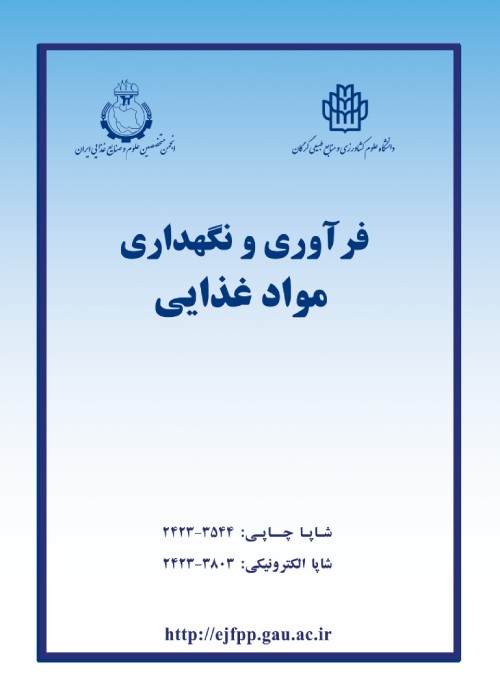Kinetic and isotherm studies of saffron crocin Extraction using 3D graphene oxide-chitosan nanocomposite
saffron as the most expensive spice in the world contains compounds called crocins that grant it unique properties. Extraction and purification of this glycosidic compound is one of the major challenges in saffron processing. Graphene oxide (GO) is an excellent adsorbent due to its properties such as flat structure, high surface area, variety of oxygenated functional groups on the surface and the ease and cheapness of its production from graphite. Therefore, in this study, the extraction and purification of saffron crocins were evaluated using 3D nanostructure of GO modified with chitosan biopolymer.
Graphene oxide synthesis was conducted through improved Hummers method followed by modification with chitosan. 15 ml of crocin solution with different concentration (25, 50, 100 and 200 mg/ml) was mixed with 15mg of nanostructure and under controlled conditions (temperature, pH and stiring rate). In certain intervals (0-200 min), the amount of crocin in solution was determined through reading its absorption at 440 nm. Kinetics (pseudo first and second order models) and isotherms (Langmuir, Freundlich and Dubinin-Radushkevich isotherms) studies of process was investigated. The efficiency of nanostructure in crocin purification was assessed by HPLC at three wavelength of 250, 310 and 440 nm. In order to assess the ability of nanostructure in separation and purification of crocin, saffron extract was used. In order to remove picrocrocin and safranal, dried stigma of saffron was treated in two stages and then extraction was performed using distilled water. The nanostructure was washed with methanol and the extract injected to HPLC.
The best process conditions for crocin isolation were stirring speed = 300 rpm, temperature of 318 K, concentration of 100 mg/l and normal pH of saffron extract. Crocin adsorption was a physiosorption process and followed the pseudo-second-order model and the Freundlich isotherm. HPLC results showed that the purity of the isolated crocin was high and very close to the standard sample.
Instrumental analysis confirmed the formation of graphene oxide/chitosan nanostructures. The effect of process variables including pH, temperature, stirring speed and crocin solution concentration on the separation process efficiency was determined. The adsorption process of crocin on the nanostructures followed a pseudo-second-order model and the adsorption was physical. The results of this study showed that synthesized nanostructures can be well used in the purification process of valuable compounds.
- حق عضویت دریافتی صرف حمایت از نشریات عضو و نگهداری، تکمیل و توسعه مگیران میشود.
- پرداخت حق اشتراک و دانلود مقالات اجازه بازنشر آن در سایر رسانههای چاپی و دیجیتال را به کاربر نمیدهد.



